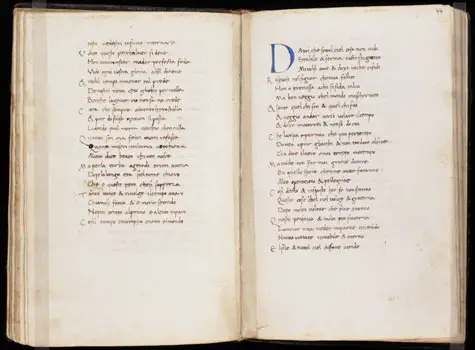
Part one of this essay will address Rossetti's implicit rejection of two Victorian critical traditions: one which treated Petrarch as a political allegorist and Laura as a symbol, and the other which regarded him as a sexually frustrated courtier with a real Laura as his love object. Moreover, Rossetti concludes the article with an anecdote that reflects upon lyric strategies in her own verse, especially 'Memory', which was published in her second collection, The Prince's Progress and Other Poems (1866). (7) 'Francesco Petrarca' is formative not only because Rossetti deploys rhetorical and hermeneutic strategies to reject secular interpretations of Petrarch's poetry but also because Rossetti researched and composed it while filling notebooks with poems that would eventually appear in her first two collections of poetry. (6) Yet only Rossetti's biographer Jan Marsh has suggested looking critically at Rossetti's formative exercise in biographical commentary-a three-thousand word biographical dictionary article on Petrarch begun in 1857 and finished by 1863. Recent studies by Alison Milbank, Mary Arseneau, and Marjorie Stone have usefully explored Rossetti's careful balance between allegorical and biographical interpretation with respect to Dante's Beatrice and her dissatisfaction with the secular rather than spiritual love favoured by Barrett Browning in her famous sonnet sequence.

(4) 'Francesco Petrarca' is significant because most critical accounts of Rossetti's career locate a later engagement with Petrarch and overlook his influence on her early poetry. Waller's Imperial Dictionary of Universal Biography (1857-63), makes another kind of intervention, entering quietly into Victorian debates about Petrarch's lyric poetry and the historical identity of his beloved Laura. (3) This essay will turn to the beginning of Rossetti's career and show how her biographical article 'Francesco Petrarca', published in John F. (2) Rossetti's own critics have been attracted to the preface of Monna Innominata as a place to begin exploring the poet's engagement with Dante, Elizabeth Barrett Browning, and Petrarch.


(1) After decades of immersion in the commentaries and translations of Dante and Petrarch by close family members and friends, Rossetti uses the preface, fourteen sonnets, and twenty-eight mottoes culled from Divina Commedia and Rime Sparse to incorporate the sequence into Italian and English literary history. CHRISTINA ROSSETTI'S Monna Innominata (1881), a sonnet sequence published in her third collection of poetry and often seen as her valediction to secular verse, has received much critical attention and acclaim in the late twentieth century, especially for its brief, quasi-historical preface on medieval and Victorian sonnet traditions.


 0 kommentar(er)
0 kommentar(er)
